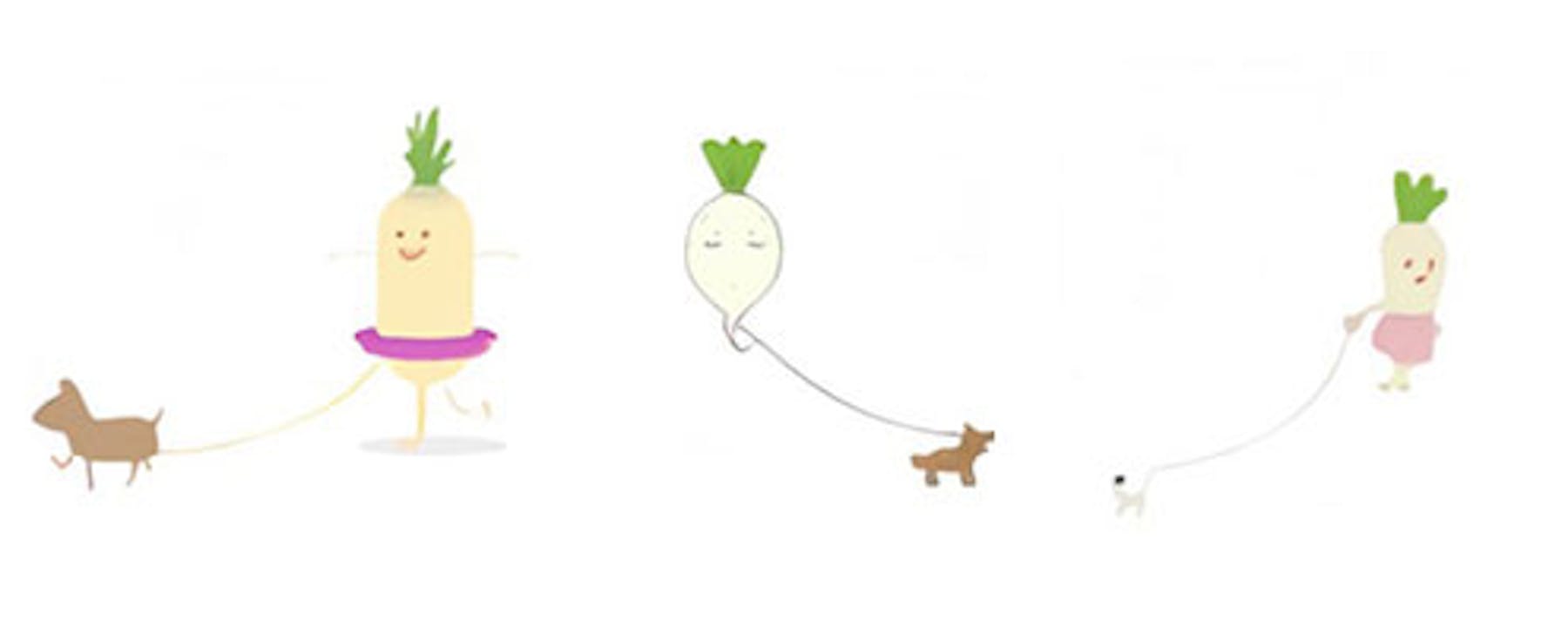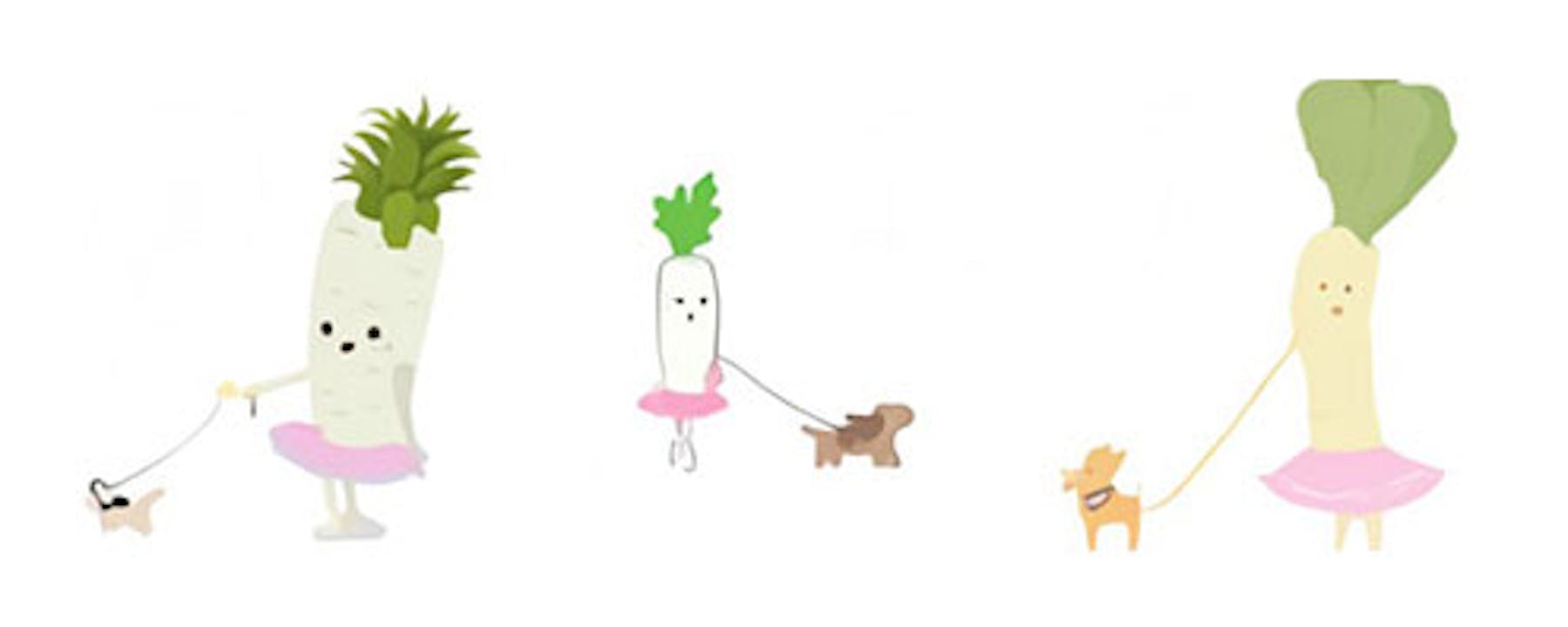The news came at the start of January: the company OpenAI was unveiling DALL-E, its artificial intelligence system capable of generating images on the basis of a text. DALL-E: a name gleaming with creativity, a contraction of the names of Salvador Dalí and the robot Wall-E! Based on the natural language processing of GPT-3, this AI is mindblowing. It can manipulate concepts which have no relation to each other. You propose a combination of key words and it comes up with several interpretations in images. No matter how complex the list of key words, the AI will be able to compose a response, such as in this example, worthy of a cadavre exquis: ‘Illustration of a white baby radish in a tutu walking a dog’. As Gauthier Vernier, member of the artistic collective Obvious explains: ‘DALL-E impresses and astounds by its ability to contextualise.’
Is DALL-E in the process of pushing the boundaries of the artistic potential of AI? What artistic capacity is linked to creativity? And if we were to admit one day that AI could be creative, would that really be a threat to us, the human creatives?
To reply to these questions, we have first to understand how an algorithm works. To put it simply, AI learns and composes by example, through being fed millions of examples. ‘AI is based on what we give it to look at and then it fills in the gaps between two reference points, or indeed a thousand. It’s that filling-in that people sometimes interpret as creativity, but in fact it is a question of simple mathematical interpolation’, says Gaël Hugo, creative coder in residence at Google Arts & Culture. The machine makes connections. ‘Artificial intelligence is a system that simulates human intelligence, but certainly doesn’t substitute for it’, comments Frédéric Migayrou, curator of the exhibition Neurons, Simulated Intelligence, at the Centre Pompidou (February 2020).
As such, AI is not capable by itself of exploring new realms of expression beyond those for which they’ve been programmed. For Gaël Hugo, ‘there is no AI capable of doing a Leonardo, and moving from mathematics to painting.’ Does this mean that in its own realm it never demonstrates creativity? If we consider creativity to be an ability to innovate, the examples of Daddy’s Car, the AI-composed song based on Beatles’ material, or Next Rembrandt, the (in)famous painting by the Microsoft team, give us pause. Is creativity merely the ability to create something new? For Gauthier Vernier, we have to distinguish ‘inventive capacities from creative capacities’.
GANs (Generative Adver-sarial Networks), with which Obvious works, are algorithms with real ‘inventive capacities’: they create their own rules. The portrait of Edmond de Belamy - the first work created by AI, which shook up the art world in 2018 when it was sold at Christie’s for $435,000 - was composed on this principle. Two algorithms train each other in an adversarial fashion: one offers new images based on its analysis of pixels and the other compares them to the database of real images, to determine whether the newly generated images are true or not. The object of the game is to dupe the second AI!
In short, the machine innovates. It has inventive capacities. In what sense, then, does it not have creative capacities? In the artistic sphere, there is a distinction between innovation and imagination. Here the machine has been inspired by something with which it is familiar (in fact, something which it was deliberately given) to create. ‘It has collected models and combined them to reconstitute them in a new form, which seems logical to it’, clarifies Gaël Hugo. The process has been automated. Without subjectivity, without will. In short, without creativity. In any case not that of the machine.
So we can see that the mere fact of something new having been brought into being is not in itself sufficient to allow us to talk about creativity. That would mean reducing creativity to simple cognitive functions: knowledge, reasoning, the mobilisation of concept and appreciation. But it seems to be located too in a conative dimension. The idea of creativity demands an intention.

And, as Gauthier Vernier adds: “the machine has no intention - the intention is brought by the artists. With GANism, the new aesthetic Obvious has named for itself, man and machine collaborate to create. The machine maximises the creative potential of the person: it is merely a tool which allows us to go further. The initial choices the artist makes are not determined, and through them their subjectivity is expressed. In the process of the portrait of Edmond de Belamy, the collective decided upon a subject, selected and refined the data, chose the canvas, signed it with a mathematical formula and put it in a golden frame. The intention lay in the emotions and the meaning that the artists give the work. It is this putting into perspective that makes it art.’ Gauthier Vernier takes pleasure in the “deus ex-machina” aspect of the process. ‘We play with the limits of AI every day. That’s what allows us to explore new artistic fields.’
Another example of a collaboration between AI and artist is Nicolas Maigret & Maria Roszkowska’s Predictive Art bot. This is an algorithm designed to generate ideas for artists projects on the basis of emergent media trends. The ideas, which associate concepts in a really wild way, are then automatically posted to Twitter. Here AI becomes the medium as well as the subject of creativity. Because it generates disconcerting subjects, it serves as a source of inspiration for potential projects. As much for its very essence as its configuration, the duo denounce it. They emphasize its predictive uses and where that goes awry, in terms of shopping, opinion or politics.
The idea of AI as a supplementary instrument of exploration in the service of human creativity allows us to escape from a gloomy vision of our era of augmented intelligence. Because if the debate around the creativity of machines is so lively, that’s because underlying it is the idea that man will be replaced by machines. The theory of the singularity predicts that at a certain moment in history, progress will only be possible through machines. The machine, with its exponential calculating power, will finish by replacing us, even destroying us. This anxiogenic thought is shaping our present and the way in which we envisage our future. It is certainly owing to this that we resist ascribing the same value to a creation that has been made by a machine as one that has not.
To escape this Manichean schema, we have to understand that acknowledging the creativity of AI is not the same as abandoning ours. “We are waiting to see the code, but DALL-E seems to be a discovery of the same magnitude as GAN. A milestone,” concludes Gauthier Vernier. DALL-E does not experience emotion, but that is the least of its faults. That doesn’t make it any less valuable as a new tool of co-creation.
Text translated into English by Sara & Emma Bielecki.








